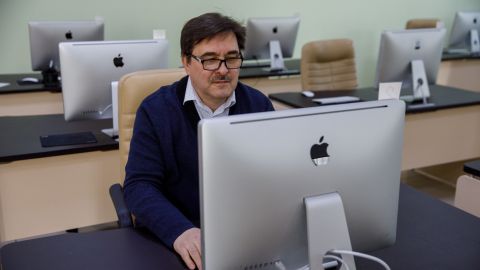SibFU Scientists to Enable Organized Swarm Functionality for Agricultural Drones
Scientists of Siberian Federal University, together with colleagues from Russian and foreign universities (China, Uzbekistan), took part in the development of specifications for transport and technological cycles of agricultural drones. Such devices are used to perform various agrotechnical tasks in “smart” agriculture — they help to monitor crops, measure land, record the condition of crops, track pest infestations of crops, etc.
Currently, there are several types of unmanned aerial vehicles used in smart agriculture. Accordingly, there are various schemes for using UAVs both alone and in a group or swarm. Big suppliers of agricultural products are interested in increasing the productivity of such devices. However, there is no general solution of this problem yet, since all transformations depend on specific samples of drones that researchers are working with.
SibFU scientists have developed a concept that allows creating universal specifications of transport and technological cycles of agricultural unmanned aerial vehicles used in the agricultural sector. The concept is based on the UAV transport and technological cycle, for which scientists have proposed conceptual means of specifications and their formal description.
The specification of transport and technological cycles is a description of the tasks corresponding to the nodes of the cycle, which are solved using a drone. Specifications are necessary for planning various agrotechnical operations that are carried out using UAVs, as well as information management systems based on geoinformation technologies and Earth remote sensing data (aerial and satellite images).
“In this work, we showed that the UAV transport technological cycle corresponds to a given field processing program and is described by a stochastic GERT model. It is able to fulfill the task to differentiate application of pesticides and fertilizers in the model area. This model is based on GERT-like nodal logic, which makes it possible to implement the so—called graphoanalytic approach in the specification of various agrotechnical operations performed using UAVs,”said Igor Kovalev, co-author of the study, Professor of the Department of Software Engineering at the School of Space and Information Technologies of Siberian Federal University.
According to the scientists, such unified specifications are suitable for almost all UAVs. They can be detailed taking into account the characteristics and parameters of a specific device performing a specific task. For example, a chronometric analysis of downtime in the cycle of an agricultural UAV of the DJI Agras T30 model was performed in the work — this helped to establish conditional functions for the distribution of downtime of the device and the probability of their occurrence.
Work on the implementation of the development is already underway together with scientists from the National Research University “Tashkent Institute of Irrigation and Agricultural Mechanization Engineers” (Uzbekistan).
“The need to increase the efficiency of the use of UAVs in precision agriculture is very high. This is especially true for farmlands with difficult terrain — many territories of the Russian Federation and Uzbekistan can be classified as such. Our digital specifications correspond to the growing trend of group or swarming use of unmanned vehicles. With their help, it is possible already at the initial stage to coordinate the work of several agricultural drones and assess possible temporary losses during operations, to ensure the required performance of the entire equipment complex, including the ground segment, taking into account the efficiency and coherence of the UAV operator team,”continued Igor Kovalev.
The scientists noted that they sought to maximize the versatility of their specifications so that domestic technological solutions in the development of UAVs for the agricultural sector would no longer face the problems of “growth” that arose, for example, from Chinese developers who have not yet been able to adapt their UAVs to the sharply increased volumes of “smart” agriculture.


